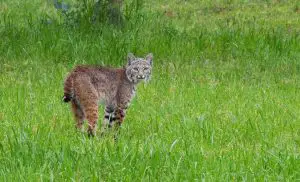Bear Spray vs Pepper Spray: Which Is More Effective?

Key Takeaways
- Bear spray and pepper spray are designed for different purposes, with bear spray specifically formulated to deter aggressive bears and pepper spray intended for personal defense against human attackers.
- Bear spray typically has a longer range than pepper spray, with distances ranging from 15 to 30 feet, while pepper spray usually has a range of 8 to 15 feet.
- Bear spray has a higher concentration of active ingredients, typically around 1-2% oleoresin capsicum (OC), compared to pepper spray, which usually contains around 10-20% OC.
- Bear spray is regulated by the US Environmental Protection Agency (EPA) and must meet specific standards for potency, labeling, and effectiveness, while pepper spray is not regulated by the EPA.
- It is important to use the appropriate spray for the specific situation and not to use pepper spray as a substitute for bear spray or vice versa.
When it comes to self-defense against aggressive animals or potential attackers, it’s important to choose the right tool for the job. In the case of bear spray versus pepper spray, which one is more effective? Let’s find out.
Bear spray and pepper spray may seem similar, but they have some key differences. Bear spray is specifically designed to deter aggressive bears and has a longer range and higher concentration of active ingredients compared to pepper spray. On the other hand, pepper spray is designed for personal defense against humans and may not be as effective against bears or other large animals.
Quick Links
What is Bear Spray and Pepper Spray?
Bear spray and pepper spray are both self-defense sprays, but they are designed for different purposes and have some notable differences in range and concentration of active ingredients.
Intended Uses
Bear spray is specifically designed to deter aggressive bears in outdoor settings. Its purpose is to create a barrier of chili pepper extract in the air, causing temporary irritation to the bear’s eyes, nose, and respiratory system, thus discouraging it from attacking.
On the other hand, pepper spray is primarily used for personal defense against human attackers. It is intended to incapacitate an assailant by causing severe irritation and pain to their eyes, nose, and respiratory system.
Differences in Range and Concentration of Active Ingredients
Bear spray typically has a longer effective range than pepper spray, with distances ranging from 15 to 30 feet. This is because encounters with aggressive bears may occur at a greater distance, and a longer range allows the user to create a larger barrier between themselves and the bear.
Pepper spray, on the other hand, usually has a shorter range, typically between 8 to 15 feet. This range is considered sufficient for most self-defense situations involving human attackers.
In terms of the concentration of active ingredients, bear spray generally has a higher concentration of oleoresin capsicum (the active ingredient in both sprays) than pepper spray. This higher concentration is necessary to effectively deter aggressive bears, as they have a higher tolerance to the effects of pepper spray compared to humans.
It is important to note that while both sprays use oleoresin capsicum as the active ingredient, the exact amount can differ between bear spray and pepper spray. The concentration and formulation are specifically designed for their intended uses and target species.
Distinguishing Factors Between Bear Spray and Pepper Spray
Bear spray and pepper spray are two types of self-defense sprays, but they have distinct differences in their intended uses, range, concentration of active ingredients, and regulations. Understanding these factors can help you determine which spray is the most appropriate for your needs.
Designed for Different Purposes
Bear spray is specifically designed to deter aggressive bears and other wildlife. It is formulated to temporarily disable the animal and provide a deterrent effect, giving you time to retreat to safety. On the other hand, pepper spray is primarily intended for personal defense against human attackers. It is designed to incapacitate an assailant by causing severe irritation, pain, and temporary blindness.
Range and Concentration of Active Ingredients
Bear spray typically has a longer range than pepper spray, allowing you to deploy it from a safer distance. The range of bear spray can commonly reach up to 25 feet or more, while pepper spray usually has a range of around 8 to 15 feet. Additionally, bear spray has a higher concentration of active ingredients, usually containing a higher percentage of oleoresin capsicum (OC), the chemical compound responsible for the spray’s effects. This higher concentration is necessary to effectively deter larger and more aggressive animals like bears.
Regulations
Another key distinction between bear spray and pepper spray is the difference in regulations. Bear spray is regulated by the US Environmental Protection Agency (EPA) as a pesticide, and it must meet specific standards regarding potency, labeling, and effectiveness. The EPA requires that bear spray is clearly labeled as bear deterrent and includes instructions for use. In contrast, pepper spray is not regulated by the EPA, which means there are no standardized requirements for its potency or labeling. However, many states and local jurisdictions have their own laws and regulations regarding the sale, possession, and use of pepper spray.
It is important to note that bear spray and pepper spray are not interchangeable. Using pepper spray as a substitute for bear spray in a bear encounter may not be effective, as it may not have the range or concentration necessary to deter a bear. Similarly, using bear spray for personal defense against humans may have unintended consequences due to its higher concentration and longer range. It is recommended to use the appropriate spray for the specific situation to ensure effectiveness and safety.
Understanding the Active Ingredient
Both bear spray and pepper spray use oleoresin capsicum (OC) as the active ingredient, but the amount of OC differs between the two sprays. OC is derived from hot peppers and is responsible for the intense burning sensation it causes when it comes into contact with the eyes, nose, and throat.
Bear spray typically contains a higher concentration of OC compared to pepper spray. The higher concentration is necessary to effectively deter bears, which have a higher tolerance to the effects of OC due to their thick fur and fat layer. The concentration of OC in bear spray is usually around 1-2%, while pepper spray for personal defense against humans typically contains around 10-20% OC.
It is important to note that the concentration of OC alone does not determine the effectiveness of the spray. Factors such as the spray pattern, range, and volume of the spray also play a role in determining its effectiveness.
In the next section, we will discuss the regulations and safety considerations surrounding bear spray and pepper spray.
Regulations and Safety Considerations
When it comes to bear spray and pepper spray, there are important regulations and safety considerations to keep in mind. Bear spray is regulated by the US Environmental Protection Agency (EPA), while pepper spray is not. These regulations ensure that bear sprays meet specific criteria for effectiveness and safety when used as a deterrent against aggressive bears.
Bear sprays undergo rigorous testing to determine their level of effectiveness and to ensure that they can effectively deter bears without causing long-term harm. The EPA sets guidelines for the concentration of active ingredients in bear spray to ensure that it is potent enough to deter bears but safe for use by humans. This regulation helps to protect both the users and the bears, as it ensures that the spray is effective in deterring bears while minimizing the risk of serious injury or harm.
On the other hand, pepper spray, which is primarily used for personal defense against humans, does not have the same level of regulation as bear spray. While some states may have specific regulations regarding the concentration of oleoresin capsicum (the active ingredient in both bear spray and pepper spray), there is no federal regulation governing the manufacture or use of pepper spray.
As a result, the concentration of active ingredients in pepper spray can vary widely between different brands and products. It is important to note that bear spray and pepper spray are not interchangeable. Bear spray is specifically designed to deter aggressive bears and has a higher concentration of active ingredients, as well as a longer range, compared to pepper spray.
Attempting to use pepper spray as a substitute for bear spray may not be effective in deterring bears and could potentially put the user in greater danger. When using bear spray or pepper spray, it is important to carefully read and follow the instructions provided by the manufacturer. Proper handling and understanding of how to use the spray are crucial for effectiveness and safety.
Additionally, it is imperative to familiarize oneself with local regulations and any restrictions on the use of bear spray or pepper spray in specific areas. In conclusion, bear spray is regulated by the EPA and undergoes testing to ensure its effectiveness and safety in deterring aggressive bears. Pepper spray, on the other hand, is not regulated to the same extent. It is crucial to use the appropriate spray for the intended purpose and to follow all safety guidelines and regulations to ensure effective and safe use.
Effectiveness and Recommended Use Cases
When it comes to bear spray and pepper spray, it is important to understand that they are designed for different purposes and should not be used interchangeably. While both sprays use oleoresin capsicum as the active ingredient, they differ in terms of range, concentration, and intended use.
Caution Against Using One as a Substitute for the Other
It is not recommended to use pepper spray as an alternative to bear spray or vice versa. Bear spray is specifically formulated to deter aggressive bears and has a higher concentration of active ingredients. Pepper spray, on the other hand, is designed for personal defense against humans and may not have the same deterrent effect on bears.
Emphasize the Importance of Using Appropriate Spray for Specific Situations
When it comes to self-defense against humans, pepper spray can be a useful tool. Its compact size and range make it suitable for personal carry and use in close encounters. However, in bear country or when facing a potential bear encounter, it is crucial to have bear spray. Bear spray has a longer range, allowing for effective deployment at a safer distance, and the higher concentration of active ingredients is specifically meant to deter bears.
Using the appropriate spray for the specific situation is essential for ensuring safety and effectiveness. Bear spray should be used as a first line of defense when in bear country, while pepper spray can be a reliable option for personal defense in urban environments or situations involving potential human threats.
By understanding the differences in range, concentration, and intended use between bear spray and pepper spray, individuals can make informed decisions and choose the appropriate spray for their specific needs and scenarios. It is always recommended to familiarize oneself with the proper use and storage guidelines of the chosen spray to ensure optimal effectiveness and safety.
Comparing Bear Spray and Pepper Spray Range and Concentration
Bear spray and pepper spray are two different types of sprays designed for specific purposes. While both sprays use oleoresin capsicum as the active ingredient, there are significant differences in their range and concentration.
- Bear spray: Bear spray is specifically formulated to deter aggressive bears and has a longer range compared to pepper spray. It typically has a range of around 20 to 30 feet, allowing users to spray from a safe distance. Bear spray also has a higher concentration of active ingredients to effectively deter bears.
- Pepper spray: Pepper spray, on the other hand, is primarily designed for personal defense against humans. It has a shorter range compared to bear spray, typically around 10 to 15 feet. Pepper spray also has a lower concentration of active ingredients compared to bear spray.
It is important to note that bear spray and pepper spray are regulated differently. Bear spray is regulated by the US Environmental Protection Agency (EPA) and must meet specific requirements for effectiveness and safety. On the other hand, pepper spray is not regulated by the EPA and may vary in terms of quality and effectiveness.
While both sprays use similar active ingredients, it is not recommended to use pepper spray as an alternative to bear spray or vice versa. They are specifically designed for different situations and may not be effective in scenarios they were not intended for. It is important to use the appropriate spray for the specific situation to maximize effectiveness and ensure personal safety.
Benefits and Drawbacks of Bear Spray
Bear spray is a valuable tool for outdoor enthusiasts and professionals who may encounter bears in the wilderness. It has several benefits that make it an effective deterrent against aggressive bears. However, it also has some drawbacks to consider. Here are the benefits and drawbacks of bear spray:
Benefits of Bear Spray
- Effective Deterrent: Bear spray is specifically formulated to deter aggressive bears by irritating their eyes, nose, and respiratory system. It can create a temporary barrier between you and the bear, giving you time to safely retreat.
- Long Range: Bear spray typically has a longer range than pepper spray, allowing you to maintain distance from the bear while deploying the spray. This can be crucial in emergency situations.
- High Concentration of Active Ingredients: Bear spray contains a higher concentration of oleoresin capsicum (OC), the active ingredient, than pepper spray. This higher concentration increases its effectiveness in deterring bears.
- Regulated by the EPA: Bear spray is regulated by the US Environmental Protection Agency (EPA), ensuring that it meets certain safety and effectiveness standards.
- Designed for Bear Encounters: Bear spray is specifically designed to deter bears and is formulated to be effective against their unique physiology. It takes into account their thick fur and strong sense of smell.
Drawbacks of Bear Spray
- Specific Use Case: Bear spray is designed for deterring aggressive bears and may not be as effective against other animals or humans. It is important to use bear spray only for its intended purpose.
- Limited Range of Use: While bear spray has a longer range than pepper spray, it still has limitations. Its effectiveness decreases at longer distances, and wind conditions can affect its range and direction.
- Potential for Harm: If used improperly or in non-emergency situations, bear spray can cause unintended harm to both humans and animals. It is important to follow the instructions provided and use bear spray responsibly.
- Not Legal Everywhere: Bear spray may be regulated differently in different areas, and its possession and use may be restricted or prohibited in certain places. It is important to be aware of the local laws and regulations regarding bear spray.
- Limited Shelf Life: Bear spray has a limited shelf life and may expire over time. It is important to check the expiration date and replace it when necessary to ensure its effectiveness.
While bear spray has several benefits as a bear deterrent, it is important to recognize its limitations and use it responsibly. Proper usage and understanding of its benefits and drawbacks can help ensure effective bear encounters in the wilderness.
Benefits and Drawbacks of Pepper Spray
Benefits of Pepper Spray
Pepper spray is a popular self-defense tool for personal protection. It offers several benefits that make it an effective choice in certain situations:
- Non-lethal: Pepper spray is designed to temporarily incapacitate an attacker without causing long-term harm or fatalities.
- Immediate effect: When sprayed directly into an assailant’s face, pepper spray causes severe irritation of the eyes, nose, and respiratory system, leading to disorientation and temporary loss of vision.
- Moderate range: Pepper spray typically has a range of about 8 to 12 feet, allowing users to deter potential threats from a relatively safe distance.
- No special permit required: In most cases, pepper spray can be purchased and carried for personal protection without a special permit, making it readily accessible for self-defense purposes.
- Easy to use: Pepper spray is generally simple to operate, often requiring the press of a button or trigger to dispense the spray.
Drawbacks of Pepper Spray
While pepper spray can be an effective self-defense tool, it also has certain drawbacks and limitations that should be considered:
- Effectiveness can vary: The effectiveness of pepper spray can vary depending on factors such as wind conditions, distance, and individual tolerance. Some individuals may have a higher resistance to the effects of pepper spray.
- Limited range: Compared to bear spray, pepper spray has a shorter range, which may require users to be in closer proximity to an attacker.
- Some legal restrictions may apply: While pepper spray is legal for personal use in many jurisdictions, certain restrictions and regulations may apply, such as limitations on the concentration of the active ingredient or the size of the canister.
- Not effective against all threats: While pepper spray can be effective against human attackers, it may not be as effective against determined or heavily intoxicated individuals. It may also have limited effectiveness against individuals wearing protective gear or goggles.
- Potential for accidental exposure: There is a risk of unintentional exposure to pepper spray, especially in indoor or crowded environments, which can affect innocent bystanders or the user themselves.
It is important to weigh the benefits and drawbacks of pepper spray and consider factors such as personal safety needs, legal regulations, and potential effectiveness before deciding to use it as a self-defense tool.
Conclusion
In conclusion, bear spray and pepper spray serve different purposes and should not be used interchangeably. Bear spray is specifically designed to deter bears and other large animals, while pepper spray is intended for personal self-defense against humans. Bear spray typically has a much larger range and higher concentration of active ingredients compared to pepper spray.
It’s important to understand the regulations and safety considerations surrounding both bear spray and pepper spray. Bear spray is regulated by the EPA, while pepper spray is not. Additionally, using the appropriate spray for specific situations is crucial for effectiveness. It is not recommended to use pepper spray as a substitute for bear spray if you encounter a bear.
Ultimately, when it comes to choosing between bear spray and pepper spray, consider your intended use and the specific situation. Both bear spray and pepper spray have their benefits and drawbacks, so make sure to educate yourself and follow safety guidelines to ensure your personal safety and the safety of others.
Stay safe and be prepared!






